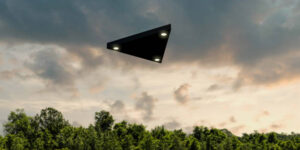Mars, the fourth planet from the Sun and Earth‘s neighbor, has long captivated the human imagination with its reddish appearance and potential for future exploration and colonization. As the focus of numerous missions and scientific research, Mars has provided valuable insights into the geology, climate, and history of our solar system. This article will delve into the defining characteristics of Mars, the scientific discoveries made through Mars exploration, and the ongoing efforts to pave the way for human settlement on the Red Planet.
Mars: Characteristics and Features
Often referred to as the “Red Planet” due to its reddish hue, Mars is the second-smallest planet in the solar system, with a diameter of approximately 6,779 kilometers (4,212 miles). Its distinctive color is a result of iron oxide, or rust, present in the Martian soil.
Mars has a diverse and intriguing landscape, featuring the largest volcano in the solar system, Olympus Mons, and the longest canyon, Valles Marineris. The planet’s surface is marked by ancient riverbeds, vast plains, polar ice caps, and the remnants of meteor impacts.
Mars has a thin atmosphere composed mainly of carbon dioxide, which contributes to its cold climate and extreme temperature variations. The planet’s average temperature is around -80°F (-60°C), with lows reaching -195°F (-125°C) at the poles.
Discoveries Through Mars Exploration
Numerous missions have been launched to study Mars, including orbiters, landers, and rovers. These missions have greatly expanded our understanding of the Red Planet and have led to several groundbreaking discoveries:
- Evidence of water: Mars is now a cold and dry planet, but there is substantial evidence that liquid water once flowed on its surface. The presence of ancient riverbeds, valleys, and polar ice caps suggests that Mars may have had a more hospitable climate in the past.
- Geological history: The diverse landscape of Mars has provided insights into the planet’s geological history. The study of Martian rocks and soil has helped scientists understand the processes that shaped the planet’s surface over billions of years.
- Potential for life: While no definitive evidence of life on Mars has been found, the discovery of organic molecules and the presence of water in the planet’s past have fueled speculation about the potential for life, either in the past or hidden beneath the surface.
The Future of Mars Exploration and Colonization
Mars has become the primary focus for human exploration and potential colonization beyond Earth. Several nations and private organizations, such as NASA and SpaceX, are developing the technology and infrastructure necessary for future manned missions to Mars.
One of the main challenges in colonizing Mars is the need for sustainable life support systems, including water, food, and oxygen production. Additionally, the planet’s thin atmosphere, extreme temperatures, and radiation levels pose risks to human health and require innovative solutions for long-term habitation.
The successful development of these technologies will not only pave the way for human settlement on Mars but also advance our understanding of human resilience and adaptability in extreme environments.
Journey Through the Cosmos
Mars, the Red Planet, has long been a source of fascination and inspiration for scientists, explorers, and dreamers alike. As we continue to unravel the mysteries of Mars and develop the technology to reach its surface, the prospect of human settlement on the planet becomes increasingly tangible. The exploration of Mars not only expands our understanding of the solar system but also pushes the boundaries of human potential and marks a bold new chapter in the story of our species’ journey through the cosmos.










